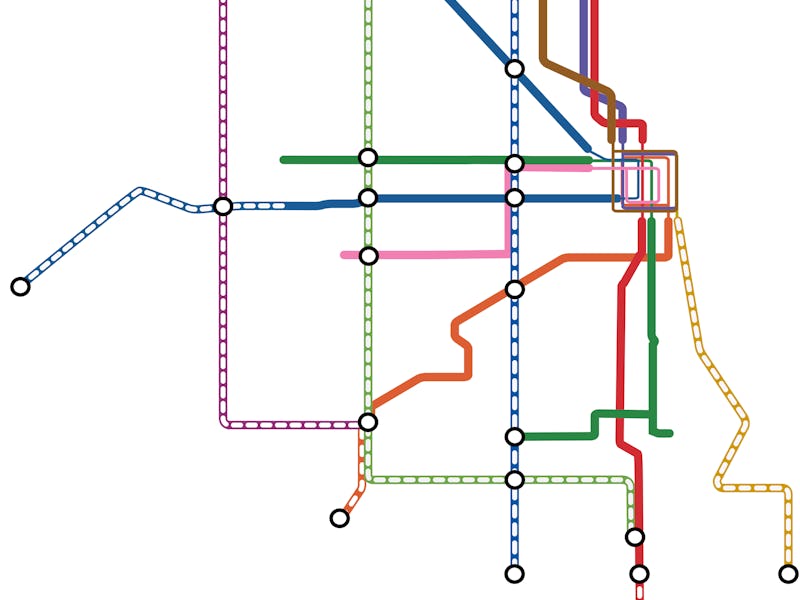Chicago wants to expand its metro system, but funding woes may get in the way. Mayor Rahm Emanuel promised in his campaign to extend the Red Line of the “L” (short for elevated) network, but has yet to secure the money. But you can’t count out the hard-working “city of big shoulders,” with a culture and history of getting big, seemingly impossible projects finished.
But Transit Future, a campaign started in 2014, places funding problems to the side and dares to dream about how Chicago’s metro could look. Funded by the Center for Neighborhood Technology and the Active Transportation Alliance, the project produced a metro map filled with extensions they think could transform Chicago.
It’s a tall order — Transit Future placed the total cost of all the upgrades at $20 billion — but the project believes the city could raise the money and make it happen. The site used Los Angeles’ metro expansion plans as an example, where the county voted to increase taxes by half a cent in 2008 to fund $40 billion worth of expansion. These numbers may seem high, but the effect on residents was small.
Here’s how the current metro map looks today:
Chicago's current rail system.
And here’s the Transit Future version, with the solid lines representing the current routes and the unfilled sections representing the proposed extensions:
Chicago's imagined rail system according to Transit Future.
There are a lot of notable additions. An extension to the Brown Line connects the north side to O’Hare airport, a South Lakefront Service runs along existing tracks, a new Lime Line connects up Chicago’s edge, and a bus rapid transit would connect up five L lines at reduced cost. There’s also several improvements to suburban services that would connect local residents to the city center.
The city does have plans to expand its metro lines — an extension to the Red Line would stretch from 95th Street to 130th Street. But the extension will cost around $2.3 billion. President Barack Obama sent $1.1 billion in January for improvements to the rest of the Red Line, some of the stations which date back to the 1920s, but this is not intended for the extension and is more aimed at a modernization project. The CTA committed $75 million in November to planning the future extension, but the extra money has to come from somewhere if Emanuel wants to fulfill his campaign promise.
Therein lies the rub. A vast, sprawling infrastructure project like the Transit Future idea may seem great on paper, but local politics and funding realities can put a damper on even the coolest extensions. As Emanuel pushes to get funding for the Red Line extension, it’s probably a tall order to consider an expansion plan several times more expensive. But with a city like Chicago, you never know.
